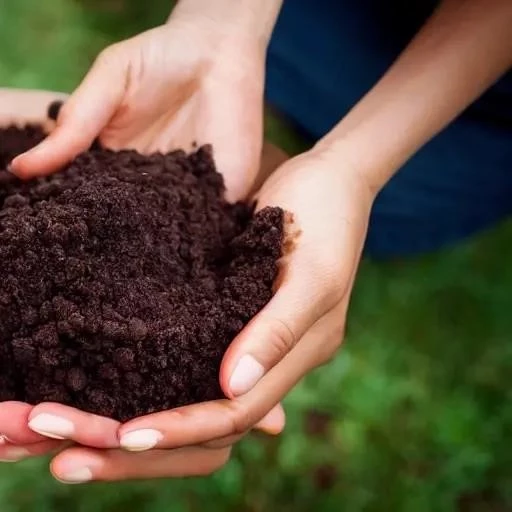Today’s Date: 10/01/2025
Imagine a garden bursting with an explosion of color, a vibrant tapestry of blooms defying all expectations․ This isn’t merely a gardener’s fantasy; it’s an achievable reality, meticulously crafted not by magic, but by the profound power of proper soil preparation․ Long before the first delicate seedling finds its home or the initial seed is sown, the true foundation of horticultural triumph is laid within the earth itself․ Preparing the soil for a flower garden is not just a chore; it is an art, a science, and an investment that promises returns far exceeding the effort․ It is the silent, often overlooked, architect of spectacular floral displays, ensuring not only survival but truly exceptional growth and resilience against the myriad challenges of nature․
In the dynamic world of gardening, where every sprout tells a story of potential, the quality of your soil dictates the narrative․ A thriving flower garden, much like a magnificent skyscraper, demands an impeccably strong foundation․ Neglecting this crucial initial step is akin to building on shifting sands, leading to lackluster blooms, struggling plants, and persistent problems․ Conversely, by meticulously enriching and aerating your soil, you are essentially creating a five-star resort for your future flowers, providing them with the optimal environment to establish robust root systems, absorb vital nutrients efficiently, and ultimately, unleash their full, breathtaking potential․ This comprehensive guide will illuminate the pathways to cultivating a flourishing floral haven, transforming even the most challenging patches of earth into a veritable paradise․
| Category | Details | Reference Link |
|---|---|---|
| Topic Focus | Comprehensive guide on essential techniques for preparing soil for a vibrant flower garden․ | Top Ten Garden |
| Key Benefits | Enhanced plant growth, vibrant blooms, improved pest/disease resistance, better water retention, optimal nutrient uptake․ | Gardeners․com |
| Essential Amendments | Well-rotted compost, aged manure, shredded leaves, grass clippings, garden lime (for acidic soil), sulfur/peat moss (for alkaline soil)․ | Rodale’s Organic Life |
| Critical Steps | Clear debris, loosen soil 8-12 inches deep, test soil pH, incorporate organic matter (2-4 inches), mulch after planting (2-3 inches), water thoroughly․ | Better Homes & Gardens |
The Earth’s Embrace: Decoding Your Soil’s Personality
Before any digging commences, understanding your soil’s existing characteristics is paramount․ Just as a physician diagnoses a patient, a shrewd gardener assesses their soil․ Is it heavy clay, stubbornly holding water and becoming rock-hard when dry? Or is it sandy, letting precious moisture and nutrients drain away with alarming speed? Leading horticulturalists, like those at the Royal Horticultural Society, consistently underscore the importance of this initial assessment․ By integrating insights from simple home test kits or more sophisticated laboratory analyses, you can accurately determine your soil’s pH level—its acidity or alkalinity—a critical factor governing nutrient availability for your chosen flowers․ Most flowering plants flourish in a slightly acidic to neutral range, typically between 6․0 and 7․0, with notable exceptions like azaleas and rhododendrons, which crave a more acidic environment․
Once you’ve uncovered your soil’s unique identity, you can begin its transformation․ For excessively acidic soils (below 6․0), the strategic addition of garden lime will gradually elevate the pH, making essential nutrients more accessible․ Conversely, if your soil leans towards alkalinity (above 7․0), incorporating elemental sulfur or peat moss will gently lower the pH, creating an ideal environment for nutrient absorption․ This targeted approach, a hallmark of professional gardening, ensures that your amendments are incredibly effective, preventing wasted effort and resources․ Having precisely adjusted the soil’s chemistry, you set the stage for unparalleled plant vitality, fostering a robust foundation for future blooms․
Cultivating the Canvas: Preparing the Bedrock for Beauty
The journey from mere dirt to fertile ground begins with clearing the area․ Think of it as scrubbing the canvas clean before painting a masterpiece․ Removing all weeds, grass, rocks, and any lingering debris is a non-negotiable first step․ This isn’t merely for aesthetic appeal; dead plant matter and weeds often harbor pests and diseases, acting as unwelcome reservoirs that can quickly sabotage your nascent garden․ By meticulously clearing the site, you dramatically reduce the risk of future infestations and infections, creating a pristine, healthy starting point for your precious flowers․ This proactive approach, championed by experienced growers worldwide, significantly diminishes maintenance efforts down the line․
Next, it’s time to loosen the earth․ Compacted soil is the archenemy of healthy roots, acting like concrete that suffocates them and impedes water penetration․ Expert gardeners consistently advise digging down at least 8 to 12 inches, effectively breaking up the dense structure․ Whether you opt for a sturdy garden fork, a spade, or even a rototiller for larger areas, the goal is to create a loose, crumbly texture․ This aeration process is profoundly beneficial, allowing oxygen to reach roots, facilitating superior drainage, and providing ample space for roots to expand freely․ Picture a network of subterranean highways, perfectly designed for water, air, and nutrient transport—that’s what you’re creating for your future flowers․
Nature’s Nutrient Buffet: The Magic of Organic Matter
The single most transformative step in soil preparation is the generous incorporation of organic matter․ This isn’t just a recommendation; it’s an imperative for sustainable, vibrant gardening․ Well-rotted compost, aged manure, shredded leaves, and grass clippings are nature’s gold, acting as a slow-release nutrient powerhouse while dramatically improving soil structure․ For sandy soils, compost acts like a miraculous sponge, dramatically enhancing water retention and preventing vital nutrients from leaching away․ Conversely, in heavy clay soils, organic matter works as a structural engineer, breaking apart dense particles, improving drainage, and making the soil more workable and less prone to compaction․ “It’s the ultimate win-win,” remarks Dr․ Eleanor Vance, a renowned soil scientist, “feeding the soil microbiota while providing sustained nourishment to your plants․”
Spreading a layer of 3 to 4 inches of this rich, dark material across your prepared beds is highly recommended․ Gently working it into the top 6-8 inches of soil ensures thorough integration․ However, a crucial caveat from seasoned gardeners: avoid piling on too much․ While beneficial, an excessive layer of compost (over 4 inches) can potentially suffocate delicate root systems, block essential airflow, and even lead to nutrient imbalances, particularly an overload of phosphorus from manure-based composts․ Striking the right balance is key to unlocking its full potential without inadvertently harming your burgeoning blooms․ Having absorbed these enriching amendments, your soil is now brimming with life and ready to nourish․
The Final Touches: Watering and Waiting for Wonders
Once all your amendments are meticulously incorporated, the next vital step is often overlooked: a thorough watering․ This isn’t merely about hydration; it’s about activation․ Water acts as the catalyst, helping the newly added organic matter and nutrients settle into the soil structure and begin their intricate work․ It ensures that the amendments are properly integrated into the root zone, where your flowers can most effectively access them․ Give your garden a deep, prolonged soaking, allowing the water to penetrate several inches into the freshly prepared earth․ This essential step also helps to reveal any low spots, allowing for minor adjustments before planting․
Finally, patience becomes your greatest ally․ After the thorough watering and integration of amendments, allowing the improved soil to settle for a few days before planting is remarkably beneficial․ This period gives everything time to meld, ensuring a stable, nutrient-rich environment for your future flowers․ By diligently following these steps, you’re not just preparing soil; you’re cultivating a robust ecosystem, ensuring that every seed, every seedling, has the absolute best chance to flourish․ The result? A breathtaking flower garden, vibrant and resilient, inspiring awe and delight throughout the season, a testament to the power of thoughtful preparation and a forward-looking approach to gardening excellence․






